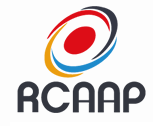Effect of the populational densities of Panicum maximum (cultivar Tanzânia) in phytoremediation of polluted soil with picloram herbicide
DOI:
https://doi.org/10.5433/1679-0359.2009v30n2p295Keywords:
Carryover, Soil decontamination, Glycine max.Abstract
This research was carried out from September of 2006 to February of 2007, under greenhouse conditions, in Rio Verde -GO/ Brazil to study the influence of Panicum maximum populational density on the phytoremediation of soil contaminated with picloram. The treatments were the combination of four Panicum maximum (cultivar Tanzânia) populational densities (0, 5, 10 e 15 plants per pot, corresponding to a 0, 122, 244 and 366 plants m-2, respectively) and three rates of picloram (0, 80 and 160 g ha-1 applied directly on the pots, simulating levels of soil contamination). After cultivating the phytoremediator specie on substrate during 100 days, soybean Glycine max L was sown at the same pot, used as a phytotoxicity bioindicator specie. Height of plants and green and dry mass of the above ground part of soybean were evaluated. The population density of the phytoremediate species Tanzania influenced the level of phytotoxicity of the herbicide picloram soybean crop sowed in succession. The population density of , 122 plants m-2 was the most efficient in the decontamination of the soil.
Downloads
Downloads
Published
How to Cite
Issue
Section
License
Copyright (c) 2009 Sergio de Oliveira Procópio, Marcos Lima do Carmo, Fábio Ribeiro Pires, Alberto Cargnelutti Filho, Guilherme Braga Pereira Braz, Welington Fernando Peres Silva, Alberto Leão de Lemos Barroso, Gilson Pereira Silva, Eduardo Lima do Carmo, Antonio Joaquim Braga Pereira Braz, Leandro Pereira Pacheco

This work is licensed under a Creative Commons Attribution-NonCommercial 4.0 International License.
Semina: Ciências Agrárias adopts the CC-BY-NC license for its publications, the copyright being held by the author, in cases of republication we recommend that authors indicate first publication in this journal.
This license allows you to copy and redistribute the material in any medium or format, remix, transform and develop the material, as long as it is not for commercial purposes. And due credit must be given to the creator.
The opinions expressed by the authors of the articles are their sole responsibility.
The magazine reserves the right to make normative, orthographic and grammatical changes to the originals in order to maintain the cultured standard of the language and the credibility of the vehicle. However, it will respect the writing style of the authors. Changes, corrections or suggestions of a conceptual nature will be sent to the authors when necessary.


















